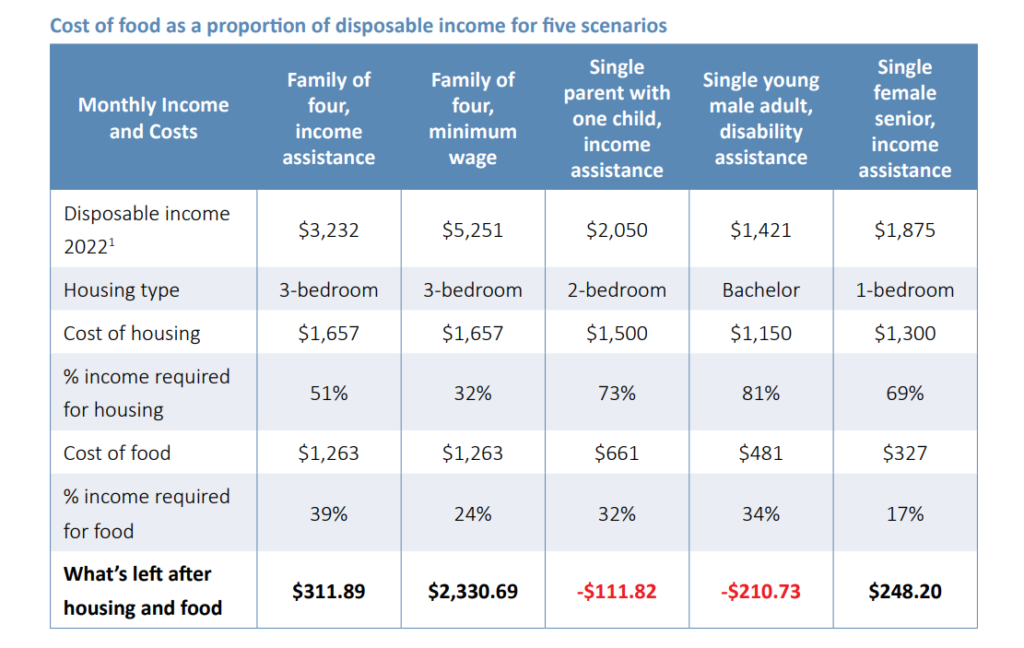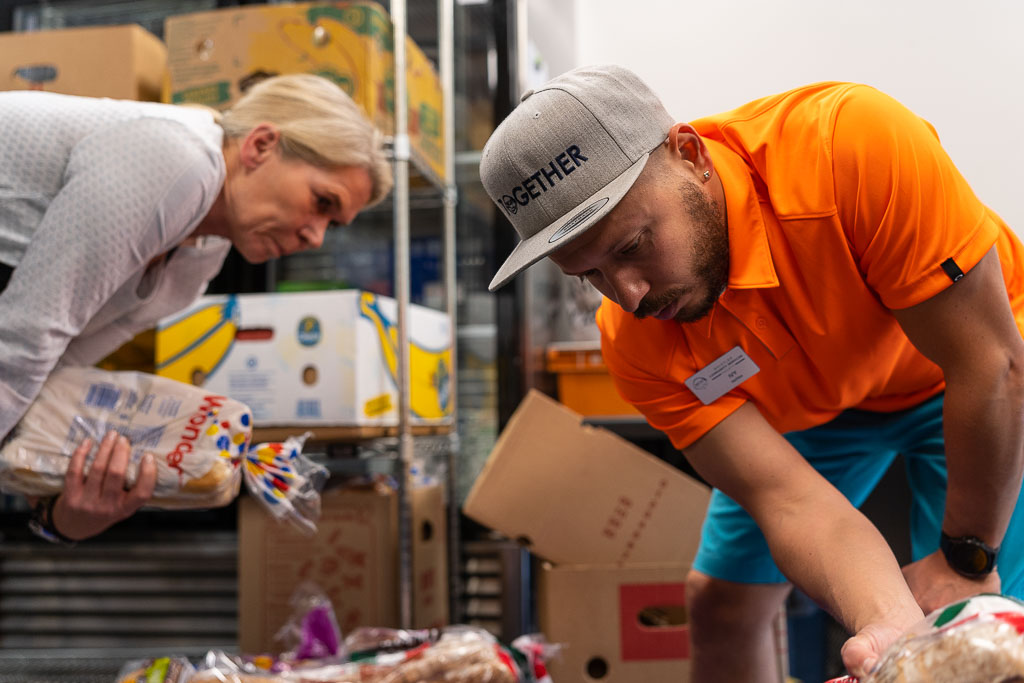Definition of Food Security: Everyone has equitable access to food that is affordable, culturally appropriate and nutritious while honoring indigenous food systems.
At WCSS, we hear the stories of those who experience food insecurity every day. Many are doing the best that they can: working two jobs at a time and paying more than 30% of their income to rent, which leaves them very little resources to deal with basic needs such as eating a healthy & nutritious diet. The report below and images shown here paint a picture of what folks are left with depending on their income levels.

Food Security Research shows that food security is an income based problem that needs an income based solution. Furthermore, there are many other factors besides income such as: economic, social, environmental and geographic factors. The report was created in 2022 for the cost of eating healthy in BC and is expected to be even higher for 2023 based on the rise in the Consumer Price Index. The food basket consists of non-processed food items and also does not take into account the time it would take to prepare meals or other necessary items such as cleaning, cooking supplies. This is a great resource to spur up conversation, and discussion around how the cost of eating is getting more and more expensive while income levels are unable to catch up with rising cost of food and housing.

We also would like to acknowledge that the price of food does not affect everyone equally, people with low incomes are affected the most. BCCDC also acknowledges that the report was not able to reflect the experiences of remote and Indigenous communities in BC.
Source : The affordability of healthy eating in BC, published using 2022 data.
http://www.bccdc.ca/Documents/Food_Costing_in_BC_2022_Report_FINAL.pdf

